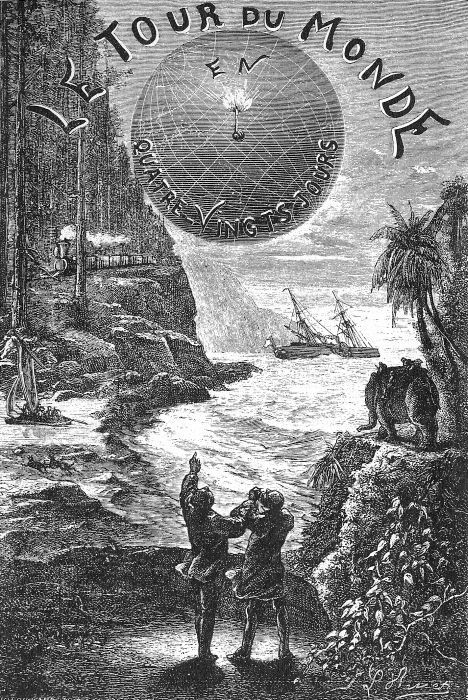Play Video
Figure 1.14 - The pale blue dot at the center of the blue circle is Earth, photographed by the Voyager 1 spacecraft from a distance of more than 6 billion kilometers away. The long line crossing through Earth is often called a “sunbeam,” because it was created by sunlight scattered inside Voyager’s camera. In other words, the sunbeam does not really exist; it is only an artifact of the camera. Credit: NASA, Voyager 1
1.2.1 Overview
In our daily lives, Earth seems pretty big. In fact, it seems so big that many ancient people did not realize it was round, instead thinking that it was flat. But from a distance, we see that Earth is actually quite small. The picture above shows Earth as viewed from the outskirts of our solar system by the Voyager 1 spacecraft. In this section, we will explore the scale of the universe, learning how our planet Earth fits into the bigger picture.
Activity

Around the World in…
In 1873, author Jules Verne published a book called “Around the world in 80 Days,” in which he explained that it was by then possible, at least in principle, to travel all the way around the world in just 80 days with a combination of ships and trains. Of course, now we can do it much faster.
Work in groups to figure out each of the following. You may need to look up some data and you’ll need a calculator for the calculations.
- Suppose there was a freeway that went all the way around the world at the equator. How long would it take you to drive around the world?
- How long would it take a commercial jet to fly around the world, assuming that it had enough fuel to make the trip without stopping?
- How long does it take the International Space Station to complete one orbit around the world?
- Suppose you could make a beam of light go in a circle. How long would it take the light to circle the world once?
Teachers Notes: This next activity requires some mathematical work, but should be doable if the students work together and you guide them. Note: Actual teacher edition will include full solutions, both written and explained in video form.